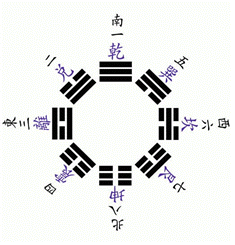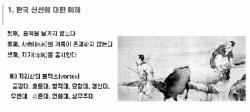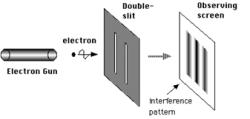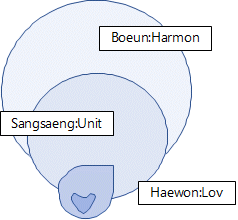학술대회논문
조선시대의 신선문화 - 서왕모 신앙을 중심으로(The culture of Immortals during the Joseon Dynasty : the beliefs of the Queen Mother of the West)
정재서
2021년 가을 증산도문화사상 국제학술대회 기조강연
The culture of Immortals during the Joseon Dynasty : the beliefs of the Queen Mother of the West
Jeong Jaeseo (Chair Professor, Youngsan University)
Table of Contents
1. Introduction
2. The establishment of the myth of the Queen Mother of the West and its transmission to
Korea
2.1 The establishment of the Queen Mother of the West myth
2.2 Transmission of the myth of the Queen Mother of the West to Korea
3. Acceptance of the Queen
Mother of the West from the Three Kingdoms Period to the Goryeo Period
3.1 Acceptance Aspects of the Three Kingdoms Period and the
Unified Silla Period
3.2 Acceptance Patterns in the Goryeo Period
3.3 Analysis
4. Acceptance of the Western Queen Mother in the Joseon
Dynasty
4.1 Acceptance Aspects in Literature
4.2 Acceptance Aspects in Art
4.3 Analysis
5. Why does the Queen Mother of the West matters in Korea?
6. Conclusion
1 .
Introduction
The Queen Mother of the West is a famous goddess in Chinese
mythology and has been worshiped in Chinese cultural sphere since ancient times. This deity
was a goddess in ancient myths, but she has the trajectory of being transformed
into a female immortal when Taoism was established later.
However, it
is worth paying attention to the fact that this goddess, whose name has been
forgotten in modern Korea, constantly appeared in various aspects of Korean
culture from the Three Kingdoms Period to the Joseon Dynasty.
Since Korea and China have maintained
constant cultural intercourses since ancient times, it is difficult to
enumerate the cases of characters of Chinese mythology and Taoism being accommodated
into Korean culture, and some of them appeared very frequently. It seems that
it is not rare to see them appear like the Queen Mother of the West
this on the front stage of culture
throughout the premodern period.
In the process of studying
the acceptance of the Chinese mythology book “The Classic of Mountains and Seas (山海經, Shan
Hai Jing)” in Korean culture, the author confirmed this fact and
identified it as a kind of cultural “flow,” and raised the issue that it is
necessary to do research focusing on the 'Queen Mother of the West
phenomenon' in Korea.
It is of course indeed
fortunate that there are at least a few papers by Korean scholars, dealing with
the aspects of accommodation of her in the fields of classical literature, art
history, and classical dance, focusing on the story and motif of the Queen Mother
of the West. These papers are
positively acknowledged as pioneering works in each field in deriving the
meaning of the accommodation of the 'Queen Mother of the West
in Korea. However, the question of “Why
does the Queen Mother of the West matters in Korea?” can be answered based on
the understanding of the accommodation the Queen Mother of the
West. It would have been difficult
to be answered from the existing discussions on the Queen Mother
of the West motif in individual and
separate fields.
In this paper, considering
the above-mentioned achievements of the past, as the first work on the
exploration of Korea's ‘Queen Mother of the West phenomenon’, I first outline
the establishment of the Queen Mother of the West myth [including historical
changes] and its introduction to and accommodation in Korea from the Three
Kingdoms period to the Joseon Dynasty. Thus, it is intended to secure a
macroscopic and integrated view by revealing the full picture of the accommodation
of the Queen Mother of the West throughout the traditional period of Korea from
the Three Kingdoms period to the Joseon Dynasty. Based on this point of view, I
will examine the in-depth factors of the reason why the Queen Mother of the
West was continuously accommodated in Korea from various aspects and a conclusion
will be drawn.
- 1520915 조선의서왕모신앙(정재서).docx (6.1MB) (12)








 댓글 0개
| 엮인글 0개
댓글 0개
| 엮인글 0개


 인쇄
인쇄 스크랩
스크랩












